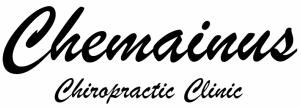Headaches
A headache is pain anywhere in the region of the head or upper neck. According to the National Headache Foundation, more than 15% of North Americans suffer from chronic, recurring headache. Approximately 90% of people will suffer from at least one headache in their lifetime (See reference 1). About 20% of children and adolescents also have significant headaches. In fact, headaches are the most common cause of absenteeism from work and school.
There are a number of different classification systems for headaches; the best-recognized is that of the International Headache Society. The most common types of headache are “primary headaches”, such as tension-type headache and migraine. Most headaches are NOT caused by any serious underlying problem.
There are a number of different classification systems for headaches; the best-recognized is that of the International Headache Society. The most common types of headache are “primary headaches”, such as tension-type headache and migraine. Most headaches are NOT caused by any serious underlying problem.
What causes headaches?
The brain tissue itself is not sensitive to pain because it lacks pain receptors. Rather, the pain is caused by irritation of the pain-sensitive structures around the brain. The tissues that can be responsible for headaches are the cranium (the skull bone), muscles, nerves, arteries and veins, connective tissues, eyes, ears, sinuses, and mucous membranes.
How Can Headaches be Treated?
The best treatment approach for headaches is dependent upon the type of headache a person is suffering from. The International Headache Society has differentiated over 100 different types of headaches, so correct diagnosis can sometimes be difficult. Most headaches are tension-type or migraine headaches, or are secondary to muscle or joint irritation in the neck. Fortunately for headache sufferers, these types of headaches are usually not dangerous and can often be treated.
Chiropractic care is an effective and well-researched therapy for some of the more common causes of headaches.
What does the public say? The 2011 Consumer Reports Overview of Alternative Therapies rated chiropractics as the second most effective treatment for headaches overall and the most effective drug-free treatment.
What does the research say? A 2011 review found that chiropractic manipulation, exercise, massage and relaxation might be as effective as some commonly used medications for the prevention of migraine headaches (See reference 2). For headaches that are caused by joint or muscle irritation in the neck (cervicogenic headache), manual therapies like chiropractic can be an effective treatment (See reference 3).
Acupuncture is also an effective and well-researched therapy for some of the more common causes of headaches. High-quality research has found that Acupuncture can offer significant relief of both tension headaches (See reference 4) and migraine headaches (See reference 5).
Massage Therapy is also an effective and well-researched therapy for some of the more common causes of headaches. Massage therapy can offer significant relief of migraines (See reference 2).
Chiropractic care is an effective and well-researched therapy for some of the more common causes of headaches.
What does the public say? The 2011 Consumer Reports Overview of Alternative Therapies rated chiropractics as the second most effective treatment for headaches overall and the most effective drug-free treatment.
What does the research say? A 2011 review found that chiropractic manipulation, exercise, massage and relaxation might be as effective as some commonly used medications for the prevention of migraine headaches (See reference 2). For headaches that are caused by joint or muscle irritation in the neck (cervicogenic headache), manual therapies like chiropractic can be an effective treatment (See reference 3).
Acupuncture is also an effective and well-researched therapy for some of the more common causes of headaches. High-quality research has found that Acupuncture can offer significant relief of both tension headaches (See reference 4) and migraine headaches (See reference 5).
Massage Therapy is also an effective and well-researched therapy for some of the more common causes of headaches. Massage therapy can offer significant relief of migraines (See reference 2).
References
- Rasmussen BK, Jensen R, Schroll M, Olesen J. Epidemiology of headache in a general population–a prevalence study. J Clin Epidemiol. 1991;44(11):1147-57.
- Chaibi A, Tuchin PJ, Russell MB. Manual therapies for migraine: a systematic review. J Headache Pain. 2011 Apr;12(2):127-33.
- Chaibi A, Russell MB. Manual therapies for cervicogenic headache: a systematic review. J Headache Pain. 2012 Mar 30.
- Linde K, Allais G, Brinkhaus B, Manheimer E, Vickers A, White AR. Acupuncture for tension-type headache. Cochrane Database Syst Rev. 2009 Jan 21;(1):CD007587.
- Linde K, Allais G, Brinkhaus B, Manheimer E, Vickers A, White AR.Acupuncture for migraine prophylaxis. Cochrane Database Syst Rev. 2009 Jan 21;(1):CD001218.

